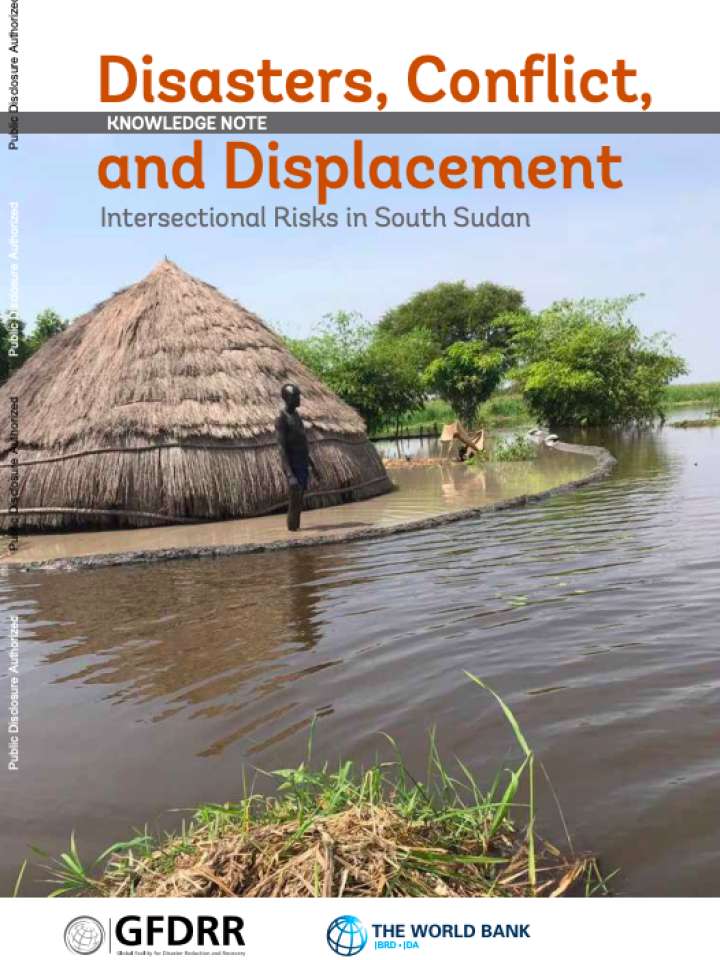Disasters, conflict, and displacement : Intersectional risks in South Sudan
The aim of this report is to explore intersectional risks that arise in South Sudan following hazards and how they intersect with disaster risk and reduction within an FCV context. To do this, the study investigated the current state of DRM in South Sudan, from the perspectives of both community members and stakeholders.
The findings revealed that a number of diseases are prevalent in South Sudan, however they are not among the most prevalent hazards that communities face. Displacement resulting from conflict, which pushes IDPs into sites with high population density and inadequate infrastructure increases the risk of disease transmission.
The findings particularly seek to emphasize the impact of hazards on vulnerable populations in the country, specifically IDPs. Other vulnerable groups to consider include women (especially widows), children, the elderly, and the disabled.
Structure of the report:
- The first part of the report conducts an analytic mapping of intersectional risks for South Sudan based on existing data and assessments related to natural hazards and conflict and fragility.
- The second part of the report explores in greater depth and based on field-based qualitative research the specific interrelationship between natural disasters, conflict and displacement.
Explore further
